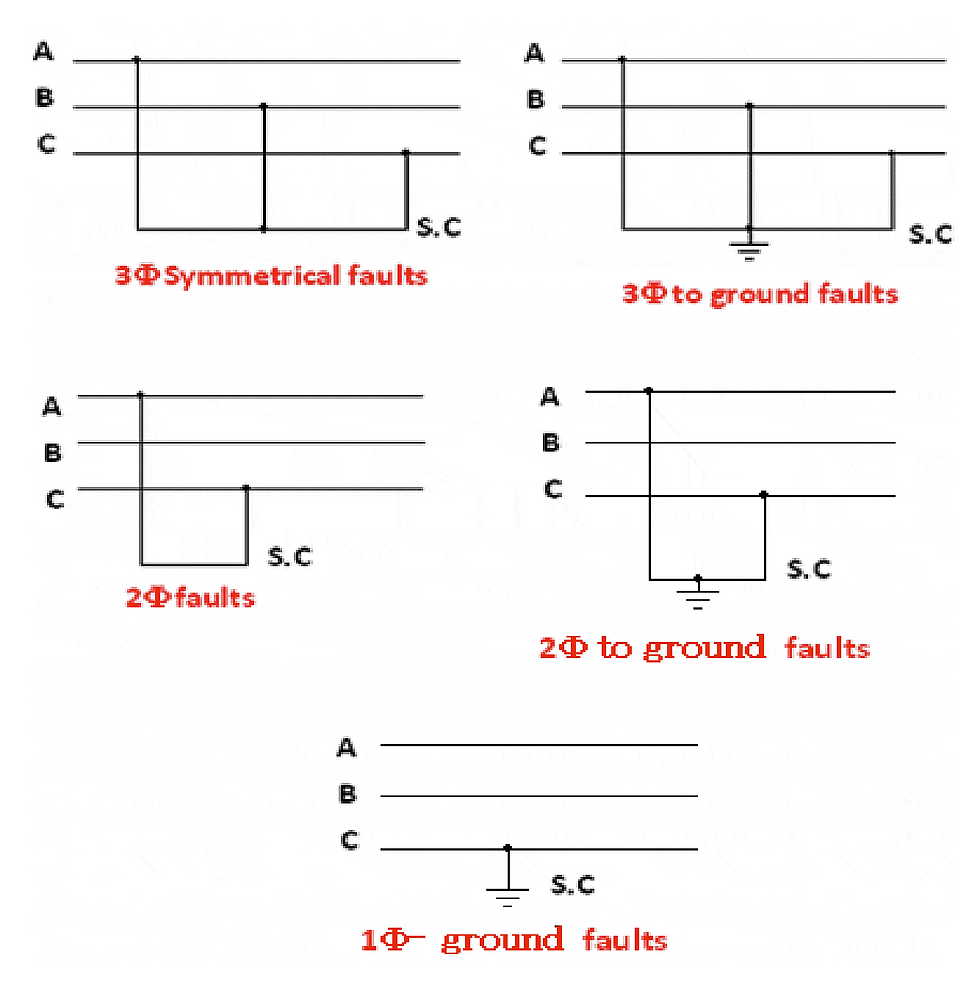Lecture Notes on Power System Protection
- Hüseyin GÜZEL

- Sep 23, 2024
- 2 min read
Protection in power systems is the art or science of constant monitoring, fault detection, and initiating the appropriate tripping of circuit breakers. The goals of power system protection include limiting the extent and duration of service interruptions due to equipment failures, human errors, or adverse natural events, as well as minimizing damage to system components involved in the failures and preventing human injury.

The course covers protection engineering concerned with the design and operation of “protection schemes“. Protection schemes are specialized control systems that monitor the power system, detecting faults or abnormal conditions and then initiating correct action.
In this course, the power system is considered as all the plant and equipment necessary to generate, transmit, distribute and utilize the electric power.
Types of Faults and Abnormalities
Faults
The principal electrical system faults are short circuits and overloads. Short circuits may be caused in many ways, including failure of insulation due to excessive heat or moisture, mechanical damage to electrical distribution equipment, and failure of utilization equipment as a result of overloading or other abuse.
Short circuits may occur between two-phase conductors, between all phases of a poly-phase system, or between one or more phase conductors and ground. The short circuit may be solid (or bolted) or welded, in which case the short circuit is permanent and has relatively low impedance.
The main types of faults in a power system are:
Short-circuit faults (3Ф, 2 Ф, Ф g, 2 Ф g)
Open-circuit faults (open conductor)
Complex faults (inter-circuit, broken conductor, cross-country etc)
Inter-turn faults in windings
Abnormalities
Real power deficit – underfrequency
Power swings
Overload and excessive operating temperature
Power frequency overvoltage or undervoltage
Underexcitation of synchronous machines
Overfluxing of power transformers
Asynchronous operation of synchronous machines
Overfrequency
Mechanical defects i.e. leaking oil, tap changer mechanism faults .

Effects of Short-Circuit Type Faults
Large or very large currents can flow through parts of the network – thousands or tens of thousands of Amps can be involved. These large currents can only be allowed to flow for a very short time otherwise equipment and generators would be damaged, most likely terminally – allowable short-circuit current flow duration could range from as short as 10 milliseconds up to say 3 seconds.
Arcs, sparking and the heating effect of short-circuit currents can start fires involving non-electrical assets/property. Very large mechanical forces can be caused by short circuit currents which have the potential to break or damage equipment.
Electric current can “escape” from the network conductors and flow through paths where they could create a hazard to people or livestock and cause damage to non-electrical assets/property.
Performance Requirements of Protection System
Discriminate between load (normal) and fault (abnormal) conditions
Not be confused by non-damaging transient conditions
Be selective – coordinate with other protection systems
Fast enough to prevent damage and hazards – but not too fast
Have no “blind spots” i.e. unprotected zones
High degree of reliability and availability
Secure against incorrect operation (security)
Should not restrict rating of primary plant and equipment
Should be affordable
Title: | Lecture notes on power system protection by Mohammed T. Lazim Alzuhairi, Dr.Prof.Mohammed Tawfeeq, Professors of Electrical and Electronics Engineering, Electrical Engineering Department, Philadelphia University, Jordan |
Format: | |
Size: | 1.9 MB |
Pages: | 59 |
Download: |






Comments